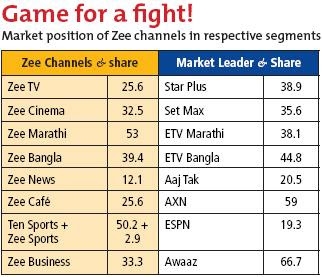IIPM Publication
You
 could say he was the first ardent proponent of globalisation. More than 2,000 years ago, Alexander the Great conquered vast swathes of territory across much of the then ‘known’ world and reached the outer perimeters of India. He even defeated an Indian king, Porus, in territory that is now known as Afghanistan. And fearful of what lay within India and beyond that, Alexander withdrew. The world still holds this global warrior in awe. In this 21st century, Alexander has been replaced by multinational corporations that invade and capture new markets with as much zest as Alexander swallowed up territory. And there are many who inspire the kind of awe that Alexander inspired. Perhaps none more than the largest corporation in the world Wal-Mart, the big daddy of retail.
could say he was the first ardent proponent of globalisation. More than 2,000 years ago, Alexander the Great conquered vast swathes of territory across much of the then ‘known’ world and reached the outer perimeters of India. He even defeated an Indian king, Porus, in territory that is now known as Afghanistan. And fearful of what lay within India and beyond that, Alexander withdrew. The world still holds this global warrior in awe. In this 21st century, Alexander has been replaced by multinational corporations that invade and capture new markets with as much zest as Alexander swallowed up territory. And there are many who inspire the kind of awe that Alexander inspired. Perhaps none more than the largest corporation in the world Wal-Mart, the big daddy of retail.Unlike Alexander, Wal-Mart has decided to invade India with all guns blazing. It has tied up with the Bharti group (the people behind Airtel and India’s largest mobile phone services company) and promises to launch its first stores in a few months. Predictably, there has been an explosion of excitement and hype within India. Analysts are hyperventilating about how Wal-Mart will revolutionise Indian retail; about how it will stomp triumphantly and trample upon competition; and about how the entry of Wal-Mart (along with the launch of Reliance retail) signals the beginning of the end of mom and pop stores – just as it happened in the United States. Says S.P. Oswal, Chairman of the Textile Committee of CII, “Entry of Wal-Mart will mean a better service for the customer as the entire industry will become competitive and all the players have to give best service to the customer”.
Yet, scratch the hype and conduct a cold, sober and objective analysis and the hoopla over Wal-Mart starts looking like…well, simply hoopla. The reality is: there are even chances of the Wal-Mart invasion of India turning out to be a loser, a campaign that started with a bang and perhaps ended in a whimper.
Of course, there is the risk that some readers will think the editorial team at Business & Economy has gone a little wonky and is perhaps losing its marbles. Aft er all, Wal-Mart generates annual revenues that are equivalent to about 40% of India’s GDP; it has about 12,000 stores across the world; it has virtually perfected the art of discounting and selling cheap (something that should be music to the ears of price sensitive Indian consumers); it has wisely roped in Sunil Bharti Mittal, one of the most successful entrepreneurs in the last decade, as the local partner; and it has the financial clout that all companies in India Inc can only fantasise about!
Given these seemingly overwhelming odds, how on earth did Business & Economy arrive at the conclusion that there are very high chances of Wal-Mart failing in India?
For Complete IIPM Article, Click on IIPM Article
Source : IIPM Editorial, 2007
An IIPM and Professor Arindam Chaudhuri (Renowned Management Guru and Economist) Initiative
For More IIPM Info, Visit Below....
! IIPM Management Introduction ! IIPM Management ! IIPM Management Courses ! IIPM Centers ! IIPM Amaze'07 !


-+Azim+Premji+(Wipro),+S+Ramadorai+(TCS)+and+Nandan+Nilekani+(Infosys).JPG)